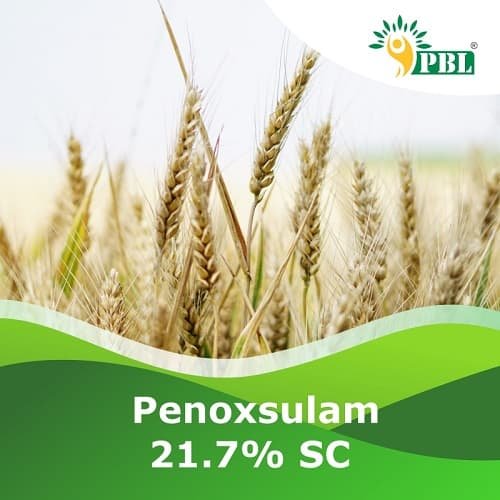Description
Mode of Action of Penoxsulam 21.7% SC
Penoxsulam, a herbicide, acts through a mode of action that involves inhibiting the enzyme acetolactate synthase (ALS), also known as acetohydroxyacid synthase (AHAS), in susceptible plants. When applied, penoxsulam is absorbed by the leaves and stems of the target weeds. It translocates within the plant, moving throughout the vascular system. Once inside the plant, penoxsulam specifically targets and inhibits the ALS enzyme.
ALS is involved in the biosynthesis of essential branched-chain amino acids, such as valine, leucine, and isoleucine, which are crucial for protein synthesis. By inhibiting ALS, penoxsulam disrupts the production of these amino acids, resulting in the accumulation of toxic metabolites and the impairment of protein synthesis. The inhibition of ALS leads to a series of physiological disruptions within the weed, including the disruption of cell division, growth, and development. This ultimately results in growth inhibition and the eventual death of the target weeds.
Benefits of Penoxsulam 21.7% SC
- Effective against a wide range of weeds
- Systemic action
- Provides long-lasting control
- Safe for use on a variety of crops
Application Method
Foliar Spray
Target Crops, Weeds, and Dosage of Penoxsulam 21.7% SC
|
Crop(s) |
Target Disease |
Dosage/Acre (Gm) |
Dilution in Water (Lit/Acre) |
|
Rice
|
Echinochloa colona, Echinochloa crusgalli Cyperus difformis, Cyperus iria, Fimbristylis miliacea, Monochoria spp., Ludwigia spp., Ammania baccifera, Sphenoclea zeylanica |
30-40 |
200 |

